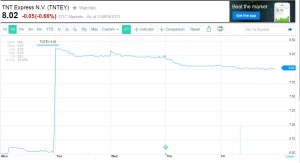I’m trying to build my audience, so if you like this post, please share it on social media using the buttons right above.
As you enter the world of investing, one of the first decisions you need to make it whether to open a Traditional IRA or a Roth IRA. Of course, I’m taking for granted that you’re using an IRA to save money, because we know that being smart with taxes is one of the most important things you can do. As you read this, remember that I’m not a tax expert, but here is how I look at this issue.
These IRA cousins are both tax advantaged, but they go about it in different ways. With a Traditional IRA, you are allowed deduct your contribution from your taxes that year; however you pay taxes on the money when you withdraw it in retirement. Conversely, with a Roth IRA you contribute with after-tax dollars but then when you withdraw the money in retirement it’s tax free.
So basically with Traditional and Roth IRAs, you’re making a choice between paying taxes now or later. If you lived in a world where your tax rate didn’t change over time, there would be no financial implications in the choice between the two IRA types. The math would work out the exact same. However, we don’t live in that world. We live in a world where your tax rate goes up the more money you make. In this world, we want to pay taxes when our tax rate is at its lowest. So where does that leave us?
I did some quick estimates of what someone’s marginal tax rate would be in a high tax state (California—where the Foxes live) and a low tax state like Florida. I did this at three different income levels: $50,000 (when you’re just starting out), $100,000 (after you’ve been working for a while), and $20,000 (when you’re in retirement—remember you’ll spend more than that but only $20k will be taxed as income).
| MARGINAL TAX RATES |
High-tax state |
Low-tax state |
| $50,000 (early working career) |
33% |
25% |
| $100,000 (later working career) |
37% |
28% |
| $20,000 (retirement) |
17% |
15% |
Wow!!! Look at that. We all knew that we would have the highest tax rate when our income peaked. But did we really expect that we’d be paying double the tax rate when we were starting out compared to when we were retired? That’s a huge difference.
Now, remember that the major difference between a Traditional IRA and a Roth is when you pay your taxes. For a Traditional IRA, you’re getting a deduction while you’re working so that $5000 you contribute in your early years gives you a $1667 tax deduction ($5000 x 33% tax rate), and a $1850 deduction ($5000 x 37% tax rate) in your middle years. Of course you’ll have to pay taxes on that money when you retire, which would be about $850 ($5000 x 17%). Compare that to a Roth IRA where you’re paying taxes on that $5000 during your early years ($1667) and your middle years ($1850) in order to avoid paying taxes in retirement ($850).
In a world where we want to maximize our portfolio by minimizing our taxes (legally, of course), the answer seems clear—GO WITH A TRADITIONAL IRA. The back of the envelop math says that going with a Traditional IRA will save you about $1000 per year that you contribute. Remember that $1000 per year over a working career of 40 years, adds up to about $150,000. Those are pretty high stakes for what seems like a pretty innocuous choice.
So why do so many people instead go with a Roth IRA? Why did Stocky Fox himself open up a Roth IRA instead of a Traditional IRA?
- Don’t understand rules: A major culprit is that many investors don’t understand the tax rules all that well. Because of that they don’t have a strong opinion on which type of IRA to pick so they go with the one that others tell them is better (which leads to the next reason).
- Roth IRAs are marketed better: For some reason it seems that Roth IRAs are marketed better than Traditional IRAs. I don’t know if it’s because “Roth” sounds like an actual name and that draws investors, or what. But my experience tells me that the average investor would pick a Roth just because that “feels right”.
- Uncertain tax future: As my loyal readers Mike and Rich have pointed out in the past, the future tax rates are uncertain. Today we know that a current tax rates make a Traditional IRA a better option, but what if those tax rates change in the future? It could definitely impact the decision, but who really knows what will happen? If I could predict the future I would own my own Caribbean island next to Johnny Depp.
- Get the pain done with: As a kid I used to eat cupcakes upside down; start with the cake and finish with the best part, the frosting. Some use my cupcake strategy to get the “hard part” over and done with. They choose a Roth IRA because they get the taxes out of the way and then it’s smooth sailing. This is following your heart instead of your head which may not make sense financially but we all do it.
- Bad advice: You’ve heard me rail about investment advisers who maybe aren’t all that good. A lot of people might take advice on which IRA to choose from someone who really hasn’t done the analysis, so they say “yeah, go with the Roth. Just as good as any.”
I’m sure there are many more reasons but that’s my list. At the end of the day I think Traditional IRAs are the best choice for most people just because with them, when you do finally pay taxes in retirement you’re probably paying at a lower rate than any time during your working career. And that choice can be of the six-digit variety. Yikes!!!
Of course, you there are special circumstances where maybe a Roth IRA works better. Maybe you’re a kid with really low income (less than $10,000 like from a summer job), but those are probably more the exception.
Let me know what you think in the comments section.

















